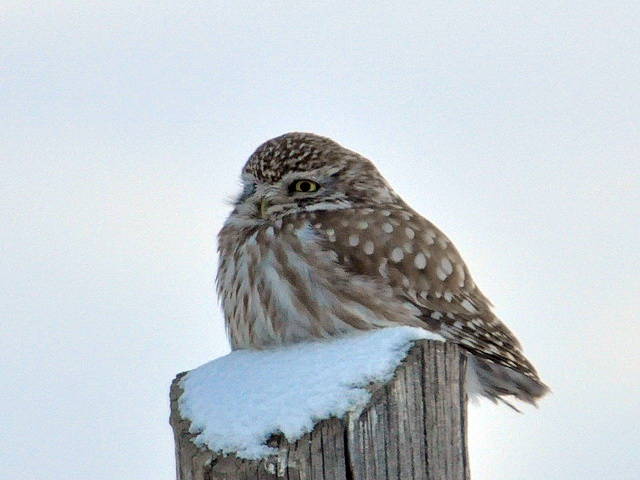
The Little Owl breeds mostly in the southern part of Kazakhstan, all the year round it lives on breeding areas. Please see the detailed distribution in Kazakhstan in the section Subspecies
The Little Owl is common resident. It inhabits the sandy, clayey or stony deserts and semi-deserts with combs or dried rivers; xerophytic low mountains and chinks; forestless foothills of main ridges up to 1500-2000 m. Generally it prefers open countries; likes to perch on stones, poles, human constructions; avoids of trees and shrubs. Breeds in separate pairs, not less than 0.5 km one from another. It builds the nest in cavities of precipices or rocks; between stones; in holes of rodents; tree holes; old cemetery monuments; uninhabited houses and sheep-folds; under the bridges. Clutch of 4-8 eggs is laid in April – May. Female incubates for 28 days from laying of first egg; male feeds her and afterwards the brood. Fledglings at the age about one month recorded from the mid-June. After the several weeks the broods break up; and juveniles begin to disperse not far from birthplace. The basic food is the rodents; in villages it usually is mouse and rats; sometimes not less in weight than Little Owl. It perhaps is most brave hunter from all predators. Perching somewhere on the prominence it wait the prey. Eats also insects, most of all the large bugs. Besides it catches lizards and small birds. Most activity time is the evening and morning twilights. Quite often it also hunts in the afternoon. Usually in the afternoon Little Owls sit on the open prominence and barely rest. It lives in stable pairs on the own territory all the year round.